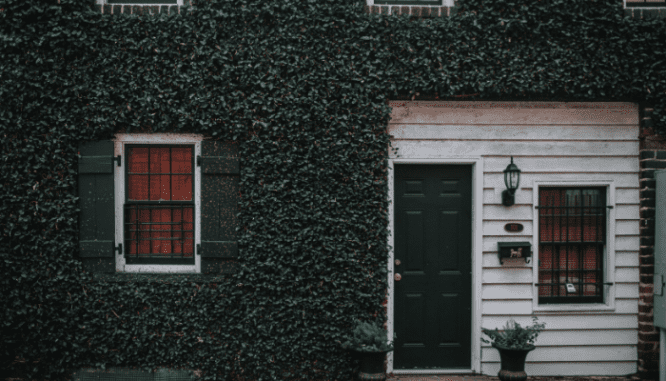How to Buy a House in Savannah: The Hostess City of the South
- Published on
- 5 min read
-
 Josephine Nesbit Contributing AuthorClose
Josephine Nesbit Contributing AuthorClose Josephine Nesbit Contributing Author
Josephine Nesbit Contributing AuthorJosephine Nesbit is a professional real estate and finance writer based out of Columbus, Ohio. She grew up going to open houses with her grandmother who taught her all about the real estate business. She has experience and knowledge in the home buying and selling process, mortgage, personal finance, and real estate investment.
You’d expect the oldest city in Georgia to cultivate a reputation for lush flora, beautiful architecture, and rich history, which is why Savannah is known as “The Hostess City of the South.” It’s a popular tourist destination and one of the most-visited cities in the South, collecting 14.8 million visitors in 2019. Some of those visitors inevitably decide to stay. With 144,464 residents calling Savannah home as of July 2019, this coastal city has seen a slow but steady population increase of 5.5% from 2009 to 2019. The city’s beauty, job opportunities in big industries like manufacturing — where employment has grown by 24% over the past decade — are significant factors driving people to the Hostess City. This means that houses in Savannah are in high demand and low supply, so when you’re ready to buy a house in Savannah, you need to act fast. Historically low interest rates and a lower cost of living are also enticing prospective homebuyers to make the move as of December 2020.
“When a house is priced properly and they love it, they need to be swift. They can’t sit on the fence for three or four days right now because the house will be gone,” said Jessica Arledge, a real estate agent with 11 years of experience who works with 76% more single-family homes than the average Savannah agent, and who was a featured agent in Top Agent Magazine‘s 2017 Georgia and National editions.
After speaking with the local experts, we’ve pieced together this comprehensive guide on where to look, the challenges you might face, and everything else you need to buy a house in Savannah and navigate the city like a local.

Start with your budget in Savannah
Although the cost of living in Savannah is lower than the national average and significantly less expensive when compared to most major metropolitan areas, these numbers have been rising due to job growth, lack of land for new developments, and a higher quality of life.
As of November 2020, Savannah’s median home price was $267,800, but that number increases the closer you get to the coast. Homes on nearby Tybee Island sit at $471,000, which is up 8.6% over December 2019. The demand for real estate in Savannah has been driving up rental prices as well. The average rent for an apartment is $1,152 in October 2020, a 4% increase compared to the year before.
The appreciation rates for real estate in Savannah have been remarkable over the past decade and remain a top contender in the U.S. housing market, making real estate in Savannah a great potential long-term investment. From 2014 to 2019, home prices in Savannah increased by 30.76%.
When determining your budget, expect to pay more for utilities (air conditioning is a must!); purchasing flood insurance, no matter what FEMA flood zone you live in, is also highly encouraged.
If you need help figuring out how much house you can afford, use HomeLight’s home affordability calculator. Having a target price in mind makes house hunting a little less stressful.
Insurance premiums
Homeowners’ insurance rates in Savannah depend on many varying factors but do tend to be higher than the state and national average.
Tom McDonald, recognized for his exceptional efforts in increasing awareness of flood issues and awarded as the best in his profession, is Savannah’s permitting and floodplain administrator and has been working for the city for more than 30 years.
McDonald advises all homeowners and renters living in Savannah to purchase flood insurance. The city is located in a flat, low-lying coastal region, and with 1,700 structures known to flood in the past — and with 35% of those flooded structures located in a low-risk FEMA flood X Zone — there’s always a risk of flooding in Savannah.
Flood insurance premiums for single-family homes vary depending on finished floor elevation, the year it was built, the FEMA flood zone, whether or not the structure has an elevation certificate, and more. The annual price ranges from $425 up to $2,173, with a surcharge and annual increase from $25 to no more than 18%.
Homeowner’s insurance in Georgia is 11% higher than the national average; Savannah’s premiums are the highest in the state, with an average rate of $2,817. When shopping for homeowner’s insurance, Arledge recommends that homebuyers ask about the named storm deductible.
After a damaging hurricane, some homeowners were hit with very high deductibles because they didn’t realize that the insurance company was charging thousands more for a “named storm” than for regular wind damage.
Know the housing in Savannah
The Hostess City is known for its downtown Historic District, where visitors come to admire the diverse architectural styles while taking a stroll down the cobblestone streets, shaded by a canopy of Spanish moss-covered foliage.
There’s much more to Savannah’s history — in fact, there are 13 unique historical districts scattered throughout the city and Chatham County, with home styles ranging from ornate Victorian, Greek Revival, Classic Federal, Georgian Colonial, and many more.
At the beginning of the 20th century after an economic crash, many historic properties were abandoned and fell into disrepair. Over the past 60 years, the Historic Savannah Foundation (HSF) has repaired more than 400 properties throughout the city.
Preservation ordinances are in place to maintain the quality and character of certain neighborhoods and to prevent any inappropriate alterations.
The properties in these districts are in high demand, and preservation and rehabilitation of these neighborhoods has made a significant impact on the value of homes. After the Great Recession, almost every historic district outperformed the market with some appreciation rates averaging over 50%, according to HSF’s Beyond Tourism report.
Although there are restrictions, you can still update a historic home. “There’s a lot of renovation going on in some of the older properties, which is really fun, because people will go in and really personalize the home,” says Arledge.
She also said that to attract buyers, more and more renovated homes are coming with trending features, such as open floor plans, quartz and granite countertops in bathrooms and kitchens, and double vanities.
Look out for these common problems
Because of Savannah’s subtropical climate, characterized by hot and humid summers and short, mild winters, be prepared to deal with bugs.
“In Georgia, they say there are homes that have had termites and homes that are going to get termites,” warns Arledge. Her biggest tip? Get a termite bond on your property, and keep the termite bond while you own the house.
Buyers need to make sure they get a home inspection. Because of the hot weather, a common issue is a cracked plumbing vent boot on roofs. The cracked boot leads to bigger problems such as allowing water to leak into the house.
Another problem that buyers need to look for is any sign of flood damage on the property. According to McDonald, 100% of Savannah is at risk of flooding. When a rain event occurs, the city’s undersized storm pipes get clogged, and when water is not absorbing into the ground fast enough, there’s flooding.
McDonald says that those looking to buy or build should spend some time investigating the area first. Make sure the lot isn’t at the bottom of a hill, and that the home is built using flood damage-resistant materials.
“My number one advice is to elevate your house,” says McDonald. The city does have a flood damage prevention ordinance that requires homes in areas that are known to flood to have a certain elevation above the flood hazard level.

Get the lay of the land in Savannah
“There’s absolutely no excuse to be bored if you live in Savannah,” says Arledge. The five miles of white sand beaches on nearby Tybee Island, food festivals, beautiful parks and squares, historical architecture, and a thriving downtown arts scene make it easy to see why!
Here are a few of Savannah’s most well-known neighborhoods.
Downtown Historic District
The 2.5-square-mile downtown Historic District is considered the heart of Savannah, with stunning restored 18th-century homes in varying styles, tall oak trees draped in moss, a beautiful waterfront view along the Savannah River, and the city’s iconic squares. There’s plenty to do in the downtown area, such as:
- A thriving arts scene from the nearby Savannah Art Museum, local art galleries, and the Savannah College of Art and Design (SCAD).
- Endless amounts of activities. Downtown has festivals, concerts, live theater, and outdoor cafes. North along the river, there are riverboat cruises and the City Market with plenty of shopping and dining.
- Enough architecturally and historically significant buildings and landmarks to make any history buff drool.
The Victorian District
The Victorian District is south of the Historic District and is an up-and-coming downtown neighborhood designed with pedestrians in mind. You’ll find Victorian-style homes with gingerbread trim and ornate architectural details.
This is a beautiful, walkable neighborhood, close to Forsyth Park, which spans over 30 acres. Forsyth Park attracts both locals and tourists with concerts, recreational activities, and weekly farmer’s markets. If you enjoy biking, there’s an off-street bikeway around the perimeter of the park and other dedicated bike lanes.
Ardsley Park
Savannah’s first suburb, Ardsley Park, was developed in the 1910s and is a large residential neighborhood and has a family-focused atmosphere. Here you can find cute bungalows to stately mansions and everything in between.
Ardsley Park is quiet and far enough away from the busy downtown area, and children can walk or bike to school or play at surrounding parks.
Skidaway Island
If you love the great outdoors, residents and visitors on Skidaway Island can enjoy over 30 miles of trails, two deep-sea marinas, golfing, and beaches and wetlands with abundant wildlife while still being in close proximity to city amenities.
Skidaway Island has upscale communities with strict HOA rules, which may deter some but it is quiet, safe, and well-maintained.
Starland District
The Starland District is where you can shop, marvel at breathtaking artwork, and get a good bite to eat from a wide array of restaurants, all within walking distance. Here you’ll find up-and-coming young professionals and students from SCAD.
Isle of Hope
This picturesque, riverfront community is a great place to call home. Low crime rates and good school districts attract families with young children, and the quiet, laid-back lifestyle make it very desirable for retirees. Local shopping might require some driving.
When to buy a house in Savannah
Although there is no wrong time to buy a house in Savannah, the season starts to slow down at the end of the year and pick back up in the spring.
Arledge informs prospective buyers that there are pros and cons at any particular time of the year. There’s higher demand in the summer, which means prices tend to be higher. As the season starts to wind down, that’s usually the best time to find a great deal.

Find a top buyer’s agent in Savannah
When you’re ready to buy a house in Savannah, look no further than this amazing city’s top real estate agents. Top buyer’s agents in Savannah save their clients an average of $51,562 on their home. (That’s a lot of date nights out!)
A trusted, reliable agent can help you avoid getting caught up in a bidding war, understand the flood risk of your dream home, and help you determine what you’re comfortable paying. The best agent can potentially save you money and get you into the home of your dreams, so you can become your own host or hostess to your loved ones in the Hostess City.
Header Image Source: (Sean Pavone / Shutterstock)
- "Savannah city, Georgia," United States Census Bureau (2020)
- "Wages & Employment," Savannah Economic Development Authority (March 2022)
- "A Guide to Keep You Above Flood Waters," City of Savannah
- "Best Homeowners Insurance in Savannah, GA for 2022," Policygenius (June 2022)
- "Beyond Tourism," Historic Savannah Foundation (2015)
